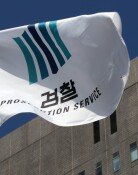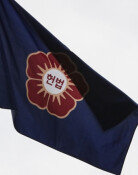Manipulation or Illegal Wiretap?
When asked by Park Myeong-gwang, a lawmaker from the Uri Party, Do you acknowledge that the National Intelligence Service was once deeply involved in political manipulation and the control of politicians, Kim Man-bok, then NIS director-designate answered at the confirmation hearing held on November 20, 2006, Though shameful, I do.
As Kim admitted, the NIS and its former body, the Agency for National Security Planning (ANSP), have, almost without exception, intervened in and influenced every presidential election.
1987 Suji Kim Incident-
This 1987 incident refers to ANSPs manipulation of a murder case into a female espionage case ahead of the 1987 presidential election.
In January 1987, Yoon Tae-sik, husband of Suji Kim, confessed to the Agency that he had strangled Kim to death while squabbling at an apartment in Hong Kong. However, the Agency allowed him to hold a press conference, at which he stated, North Korea tried to abduct me through my wife, who is a spy affiliated with the General Association of Korean Residents in Japan and a Korean residing in Hong Kong, and confirmed his remarks.
The Agency tacitly permitted his lie to tip the balance ahead of the presidential election. At the time, leading officials at the Agency along with then Director Jang Se-dong were on the defensive due to the Kunkuk University incident where students advocating democracy were arrested.
The truth was revealed as recently as 14 years later in 2001 by a prosecutorial investigation, and Yoon was sentenced to a prison term of 15 and a half years. The court also ordered the government to offer an indemnity of 4.2 billion won to the bereaved family of Kim.
The 1992 South Korean Workers Party Incident-
The ANSP announced in 1992, North Korea sent Lee Seon-sil, a candidate for the polibureau at North Korea Workers` Party to South Korean in an effort to unite two Koreas in a communist way, and ordered her to establish the South Korean Workers Party, which would have been the biggest of its kind since Namrodang, and arrested 62 people involved in the incident for violating the national security law.
At the time, Kim Yeong-sam, then presidential candidate from the Democratic Liberal Party alleged that politicians were involved in the incident, taking issue with the ideology of his rival, Kim Dae-jung.
Regarding this case, the NIS last August confirmed that Lee was a spy from North Korea and that the Central Region Party also existed. But it also pointed out, The ANSP exaggerated the incident and attempted to exploit it in favor of the ruling party.
In other words, the Agency concocted the South Korean Workers Party by combining three underground democratic organizations even though there were no relations among them.
Bukpung and the Oh Ik-je Letter Case in 1997-
In August 1997, the Agency made an announcement based on telephone records that Oh Ik-je, former leader of Cheondogyo, had telephone conversations with presidential candidate Kim Dae-jung 20 times before he stealthily entered North Korea.
In December of the same year, it requested police to issue a search warrant against Kim Dae-jung, alleging that Oh sent a letter with a Pyongyang postmark to Kim and that the letter showed that North Korea favored Kim. After that, Yoon Hong-jun, a Korean-American, asked for a press conference and said, Kim has relations with North Koreas high-ranking officials.
Those incidents triggered the controversy of Bukpung, referring to a fear-mongering of North Koreas influence. After the election, the prosecution arrested six officials of the Agency, including then Director Gwon Yeong-hae, on charges of violating the national security law and election laws, saying, Gwon had a stance that Kim Dae-jung should not be president and intentionally made Ohs letter public, effectively leading the Bukpung. The prosecution also revealed that the Agency lured Yoon with money to have the press conference.
Illegal Wiretapping in 2002-
The national information agencys interference in presidential elections continued even after the opposition party took control of the country.
In November 2002, Kim Yeong-il, then secretary-general of the Grand National Party, held an urgent press conference and said, I obtained an original document regarding wiretapping that is reported to high-ranking officials at the NIS, and made public the names of 39 high profile figures including 24 lawmakers, two CEOs of the media, eight journalists, and the content of their phone discussions.
The NIS at the time denied the allegations by saying that the document was from stock markets to manipulate stock prices and that cell phones could not be wiretapped.
Before the incident, Lawmaker Jeong Hyeong-geun presented in September and October separate materials alleged as the NISs eavesdropping reports, including documents on an allegation about Hanwha groups taking over Daehan Insurance, a telephone conversation between Park Ji-won, then presidential chief secretary, and Yosida Dakesi. The NIS rebuffed those materials, though, saying, They are all fabricated.
However, while investigating illegal wiretapping conducted by the Mirim team, the prosecution confirmed in 2005 that the documents presented by Jeong were drawn up by the NIS itself.
ditto@donga.com
Headline News
- Med professors announce intention to leave hospitals starting Thursday
- Bridge honoring Sgt. Moon Jae-sik unveiled in Pennsylvania
- Chief of Staff Chung tells presidential secretaries to stay away from politics
- US FTC bans noncompete agreements
- N. Korea launches cyberattacks on S. Korea's defense companies







